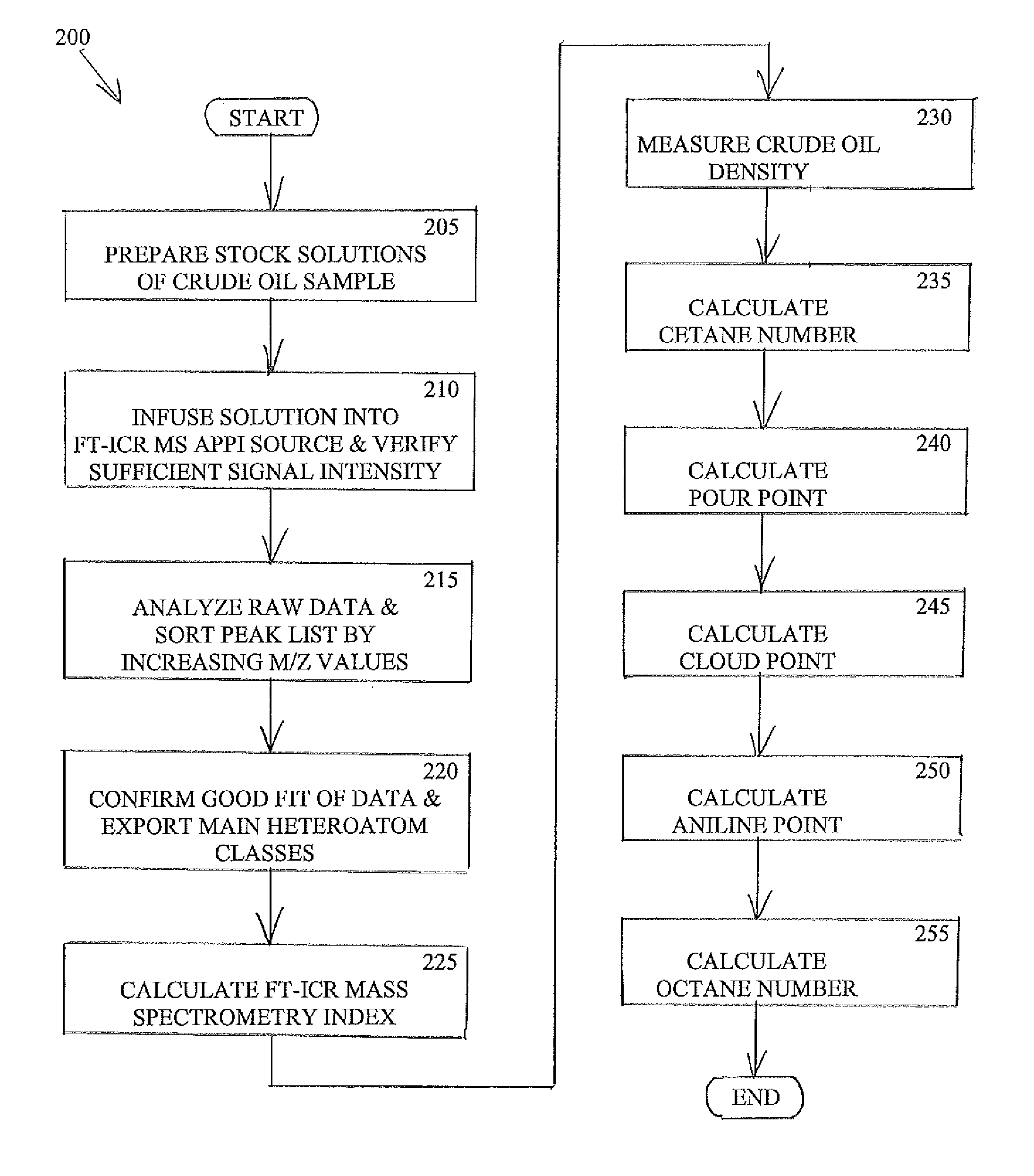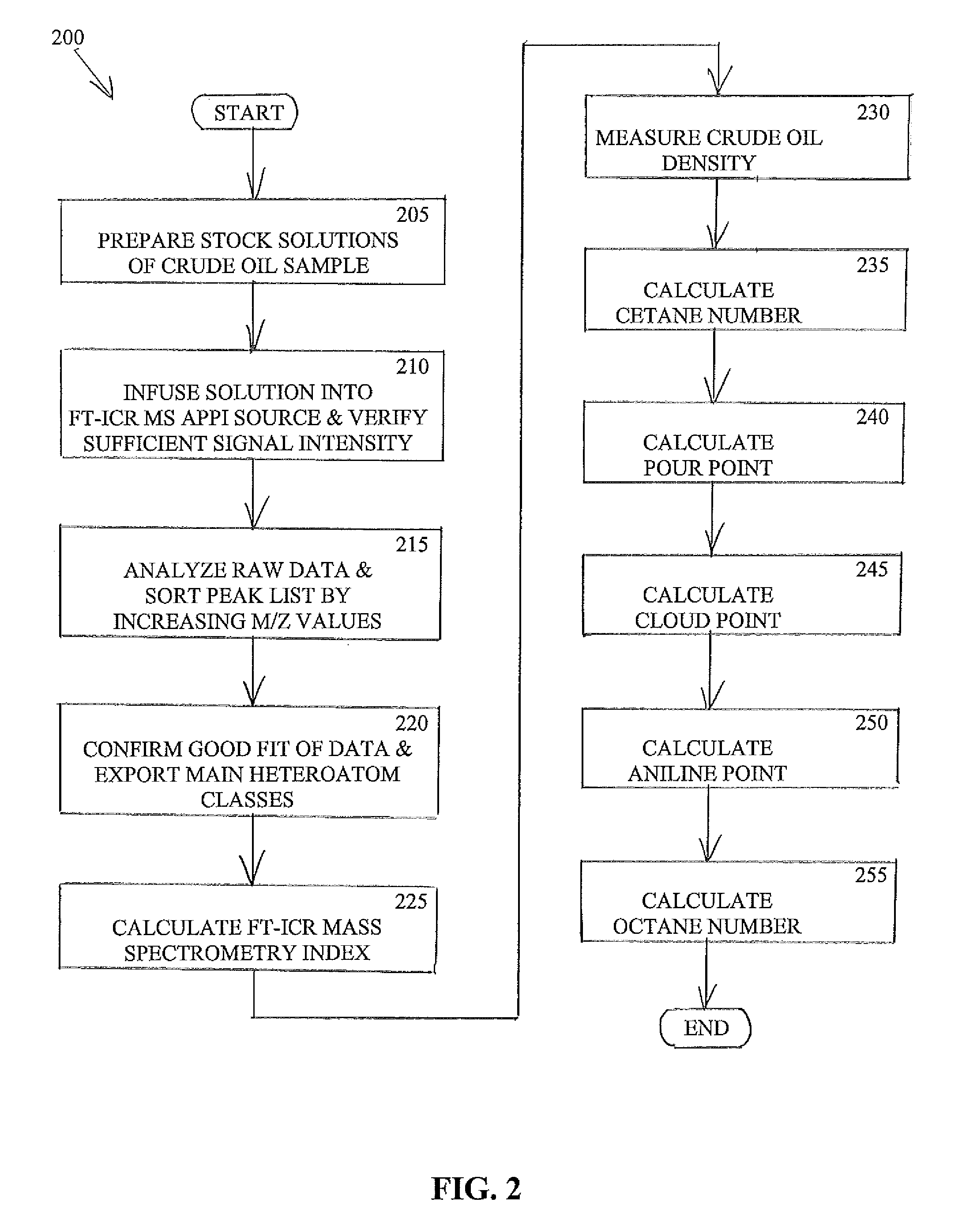Characterization of crude oil by fourier transform ion cyclotron resonance mass spectrometry
- Summary
- Abstract
- Description
- Claims
- Application Information
AI Technical Summary
Benefits of technology
Problems solved by technology
Method used
Image
Examples
Embodiment Construction
[0026]Crude oil samples were prepared and analyzed by atmospheric pressure photo ionization (APPI) Fourier transform ion cyclotron resonance mass spectrometry (FT-ICR MS) according to the method 200 described below, and illustrated in FIG. 2.
[0027]In step 205, Stock solution 1 is prepared by dissolving a 100 μL sample of the crude oil in 10 mL of toluene (or alternatively, in a 50 / 50% volume mixture of toluene with methanol, methylene chloride, dichloromethane or tetrahydrofuran). If complete solubility is not attained, based upon visual observation against a light source, methylene chloride is added to achieve a clear solution. The solution is shaken for a minimum of 20 seconds.
[0028]Solution 2 is prepared with a 1:100 dilution of solution 1 in methylene chloride. The miscibility of the solvent mix must be ensured.
[0029]Solution 3 is prepared with a 1:10 dilution of solution 2 in methylene chloride (i.e., 100 μL of solution 2 in 900 μL solvent).
[0030]The dilution ratio depends on t...
PUM
 Login to View More
Login to View More Abstract
Description
Claims
Application Information
 Login to View More
Login to View More - R&D
- Intellectual Property
- Life Sciences
- Materials
- Tech Scout
- Unparalleled Data Quality
- Higher Quality Content
- 60% Fewer Hallucinations
Browse by: Latest US Patents, China's latest patents, Technical Efficacy Thesaurus, Application Domain, Technology Topic, Popular Technical Reports.
© 2025 PatSnap. All rights reserved.Legal|Privacy policy|Modern Slavery Act Transparency Statement|Sitemap|About US| Contact US: help@patsnap.com



